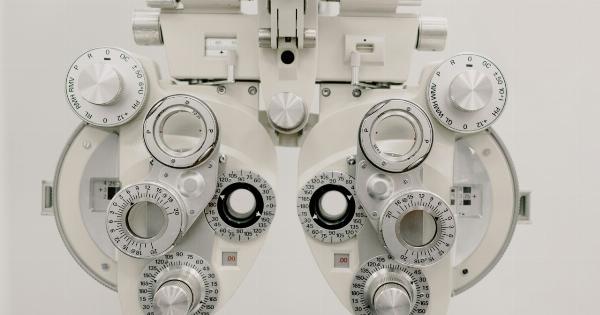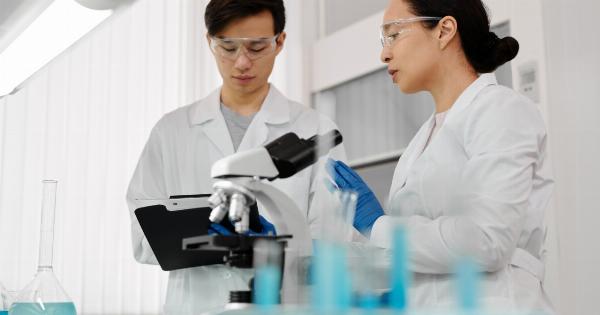Chromatography is a versatile and widely-used analytical technique that is employed for separating and identifying both organic and inorganic compounds.
It plays a crucial role in various fields, including pharmaceuticals, forensics, environmental analysis, food and beverage industry, and many more. This article provides a comprehensive overview of chromatography, its different types, and its diverse applications.
Types of Chromatography
Chromatography can be classified into several types based on the principles and techniques employed. Some of the commonly used types include:.
1. Gas Chromatography (GC)
Gas chromatography is a technique used for separating volatile compounds based on their vapor pressure and affinity towards the stationary phase.
It involves the injection of a gaseous sample into a column packed with a stationary phase, followed by its separation into different components. GC is widely used in the analysis of volatile organic compounds (VOCs) in environmental samples, the determination of drug purity, and forensic analysis.
2. Liquid Chromatography (LC)
Liquid chromatography is a technique widely employed for separating and quantifying various compounds dissolved in a liquid mobile phase.
It encompasses several sub-techniques such as high-performance liquid chromatography (HPLC), ultra-high-performance liquid chromatography (UHPLC), and gel permeation chromatography (GPC). LC is extensively used in the pharmaceutical industry for drug analysis, quality control, and process monitoring.
3. Thin-Layer Chromatography (TLC)
Thin-layer chromatography is a simple and quick form of chromatography that separates compounds based on their differential migration rates on a thin layer of adsorbent material.
It is commonly used for qualitative analysis, identification of components in mixtures, and monitoring chemical reactions.
4. Ion-Exchange Chromatography (IEC)
Ion-exchange chromatography is employed for separating and purifying charged compounds based on their interactions with charged stationary phases.
It is widely utilized in the pharmaceutical industry for protein purification, removal of impurities, and isolation of chemically similar compounds.
5. Size-Exclusion Chromatography (SEC)
Size-exclusion chromatography, also known as gel filtration chromatography, separates molecules based on their size and molecular weight.
It is commonly used for determining molecular weight, purification of proteins, separation of polymers, and analysis of complex mixtures.
6. Affinity Chromatography
Affinity chromatography utilizes specific interactions between target molecules and immobilized ligands on a stationary phase. It is widely employed for purifying proteins, antibodies, and nucleic acids.
Affinity chromatography is particularly useful in biomedical research and pharmaceutical development.
7. Chiral Chromatography
Chiral chromatography is employed for separating enantiomers, which are mirror-image isomers of a molecule. It plays a crucial role in pharmaceutical research, drug development, and analysis of chiral compounds in biological samples.
Applications of Chromatography
Chromatography finds extensive applications in various fields due to its efficiency, sensitivity, and versatility. Some of its major applications include:.
1. Pharmaceutical Analysis
Chromatography is widely used in the pharmaceutical industry for drug analysis, quality control, determination of drug impurities, and formulation development. It ensures the safety, efficacy, and quality of pharmaceutical products.
2. Environmental Analysis
Chromatographic techniques are extensively employed in environmental analysis for the determination of pollutants, pesticides, heavy metals, and other contaminants in air, water, soil, and biological samples.
It aids in monitoring and assessing environmental pollution levels.
3. Forensic Science
Chromatography plays a vital role in forensic analysis for the detection and identification of drugs, toxins, explosives, and other substances in forensic samples. It provides crucial evidence in criminal investigations and legal proceedings.
4. Food and Beverage Industry
Chromatography is utilized in the food and beverage industry for quality control, authenticity testing, and detection of contaminants such as pesticides, mycotoxins, and food additives. It ensures the safety and compliance of food products.
5. Biochemical and Biomedical Research
Chromatography techniques are extensively used in biochemical and biomedical research for protein purification, analysis of biomolecules, separation of nucleic acids, and characterization of complex biological samples.
They aid in understanding the structure and function of biological systems.
6. Petrochemical Analysis
Chromatography is employed in the petrochemical industry for the analysis of petroleum products, determination of hydrocarbon composition, and monitoring of product quality.
It helps in ensuring the efficiency and compliance of petroleum refining processes.
7. Cosmetics and Personal Care Products
Chromatography is utilized in the cosmetics and personal care industry for the analysis of ingredients, determination of product stability, and detection of contaminants. It ensures the safety and quality of cosmetic products.
Conclusion
Chromatography is a powerful analytical technique that offers versatility and precision in separating, identifying, and quantifying different compounds in a wide range of samples.
Its diverse applications in various fields make it an indispensable tool in scientific research, industry, and forensic investigations.






























